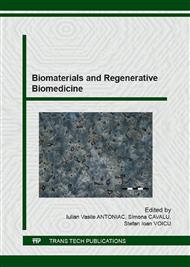p.3
p.12
p.20
p.25
p.31
p.35
p.41
p.46
p.50
Immediate Loading of Dental Implants - A Case Study
Abstract:
The ability to achieve predictable results in oral implantology depends on indepth knowledge of all factors affecting bone healing, as well as on implant characteristics and the mechanical forces involved in immediate loading. The success of the immediate loading protocol relies on three main factors: (1) primary stability, which limits micromotion of the implant, (2) secondary biologic stability, resulting in osteogenesis in the peri-implant area, and (3) the control of bone resorption caused by deleterious loading forces that lead to implant instability during healing. Activated platelets play a crucial role in peri-implant healing and the use of Plasma Rich in Growth Factors (PRGF) in association with immediate implant placement could be a viable therapeutic option for the reabilitation of postextraction sockets. In our case-study, the implants and the abutments were welded with a titanium bar in order to provide predictable fixation and immobility of implants in early stages of bone healing. The implants have been properly integrated at both the bone and gingiva levels allowing the patient to resume both esthetic and masticatory functions from the very day the implants are inserted.
Info:
Periodical:
Pages:
31-34
Citation:
Online since:
May 2016
Authors:
Keywords:
Price:
Сopyright:
© 2016 Trans Tech Publications Ltd. All Rights Reserved
Share:
Citation:


